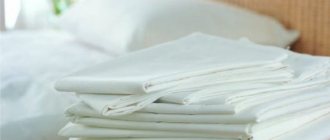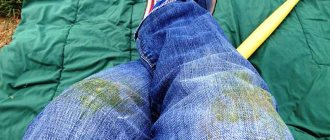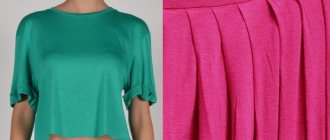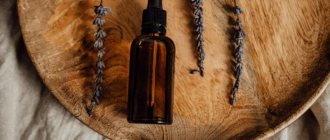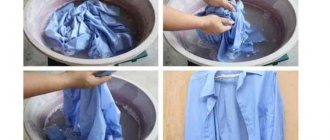Today's fashion does not involve wearing starched things. However, there are special occasions in life when you want to look special. At any important event, a man in a dazzling white, crisp shirt will attract glances, giving the impression of a successful and confident person.
If you are a fairly young woman, you probably don’t know how to starch a shirt. This is not your fault - hand washing and other manipulations with laundry at home remain only in the memory of your grandmothers, who in their youth did not have not only an automatic washing machine, but also an activator. Linen was washed by hand, boiled, starched, even blued. Let's use their skills and learn how to starch clothes ourselves.
Preparing laundry
You can starch a shirt or other clothing only after the main wash. Carry it out in the washing machine, in the mode required for this type of fabric. Most often, it is customary to starch clothes made of cotton, which is washed at a fairly high temperature. Therefore, in order to save money, you should not add synthetic things to the drum.
If you wash white cotton men's shirts, it is better to give them a separate wash. With pre-soak and double rinse.
Batiste and chiffon shirts do not like high temperatures when washed. Pre-washing is not necessary for them, and they are easier to rinse than cotton ones.
Why do shirts starch?
Due to its special composition, starch, penetrating into the fabric of the product, makes it more rigid. In addition, the shirt (or a separate part of it) takes on a new look.
And:
- The product wears out more slowly and retains its appearance for a longer period, since after the procedure its texture becomes denser.
- After the procedure, it is more difficult to wrinkle the item.
- After a starched shirt is ironed, an additional layer is formed on it, which will give the product whiteness.
- After the procedure, a protective film is also formed on the collar, which serves as a dirt repellent. Despite this, when washed, the film dissolves and the item is easily washed.
It is worth noting that only collars made from natural materials can be starched. Synthetics do not have the necessary porous structure, which is why it simply cannot be starched.
If we talk about the negative consequences of this procedure, we can only note the fact that after the procedure the item (in this case, the collar) will have poor oxygen permeability. Therefore, starched items are not suitable for daily wear.
About time and hardness
After the starch concentrate has cooled, dilute it with clean water in such an amount that the prepared clothes can be completely immersed. Do this in a container that you have prepared in advance. Consistency in this case is very important. It is correct to first prepare the solution and only then lower the shirt into it. We do not recommend doing the opposite - instead of dense and smooth fabric, you will get wrinkled and brittle, which will be impossible to handle.
Now about the concentration of the solution.
- To prepare a hard solution, use 2 tablespoons of starch, which is brewed with 1 liter of water.
- Semi-rigid solution - 1 spoon per liter.
- Soft solution - teaspoon per liter.
General information
How to starch a shirt
It is not difficult to starch a skirt, shirt, or collar. The process can be divided into three stages:
- — Select a solution;
- — Prepare products;
- - Starching.
First stage : choosing a solution. First you need to choose what type of solution to use, prepare it, and then start starching your clothes.
Soft way:
- — you need to take two containers and pour a liter of cold water into them;
- — dissolve a teaspoon of starch in one of the containers, without lumps;
- - boil the second part of the water and pour the starch solution into it;
- - the paste must be boiled for 3 minutes and stirred constantly;
Important : this method is suitable for processing clothes made of chiffon and cambric
Semi-hard method: Preparing the paste is similar to the soft method. The difference is that in this method you need to take a tablespoon of starch.
Important : the method can be used for cotton products
Hard way:
- - mix two tablespoons of starch with one spoon of water and grind to a paste;
- — add 15 grams separately to a glass of hot water. salt;
- - mix the prepared solutions together and boil for 2 minutes;
- - cool the paste.
In this way you can starch both the collar and the whole shirt.
Second stage : product preparation
Regardless of which starching method was chosen, the procedure must be carried out after washing the item. There are several features:
- - Cotton items should be washed in hot water. It is not recommended to add things made of synthetic material to them. For cotton shirts, it is best to choose a double rinse and pre-soak wash;
- — the washing temperature for chiffon and cambric should be chosen lower. You can choose a mode without pre-soaking or rinse the product manually.
Third stage : starching things
The procedure for starching is quite simple:
- — you need to prepare a paste, leave the products in the solution for about 30-35 minutes;
- - then hang the starched item on a hanger;
- — spray the product as it dries with water from a spray bottle;
- - Iron the shirt when it becomes a little damp.
Important : during the ironing process, the greatest attention should be paid to the cuffs and collar. It is not recommended to dry a white shirt in direct sunlight. Also, do not lay the product on the radiator, so as not to dry out the fabric and avoid difficulties during the ironing process.
Important : It is recommended to dry shirts at room temperature on hangers
The process is underway
Dip the laundry into a homogeneous, slightly viscous starch solution. If you want to add shine to the fabric, dissolve a tablespoon of table salt in a starch solution.
Leave the laundry in the solution for 15-20 minutes, let it become thoroughly saturated with starch. If you starch a shirt, dry it on hangers so that unnecessary folds cannot form on it.
Do not wait until starched clothes are completely dry. Iron it wet and then dry it completely.
Pros and cons of starched clothes
Taking into account the following factors, you will be able to correctly determine whether the products really need to be processed, or whether you can do without it.
Positive sides:
- the wear process slows down significantly - starch strengthens the fabric structure, making it denser;
- particles of the substance attract dirt, but after washing, clothes get rid of stains and starch more easily, remaining spotlessly clean;
- the applied layer becomes compacted and becomes thicker after ironing, which gives the shirt a boiling white color;
- The wardrobe item hardly wrinkles.
Among the significant drawbacks, there is only one: the fabric stops “breathing”. A starched shirt is dangerous to health if you wear it constantly, for example, to work.
Important : when putting on a starched shirt, remember that this is not an easy thing. It should be loose-fitting and not tight-fitting, otherwise wearing it will have a bad effect on the condition of the skin. The maximum safe time spent on the body is 5 hours.
Collar and cuffs
If you don’t want to starch entire shirts, you don’t like it for some reason, then we recommend that you subject the collars and cuffs of cotton items to this treatment. Starched, they will acquire rigidity and an ideal shape, and will not wrinkle or get very dirty.
Have you wondered how to starch your collar and cuffs correctly without processing the rest of the fabric? Very simple. Cook the starch in a rigid proportion. Let it cool and lower the collar, one, and the second cuff there alternately. Do this three or four times and hang the shirt to dry. Again, on hangers.
Useful tips
Experienced housewives have identified a number of tips that will help you properly starch the collar of a shirt or other product.
preparing the starch mixture
Such advice includes the following points:
- If you are too lazy to starch the product yourself, you can use a washing machine. To do this, the product is poured into the rinse aid container, after which the machine starts. The item will begin to starch when the wash reaches the rinse stage. Despite the simplicity of this method, it should not be used often. The effect of the procedure will be less effective than that of manual starching, and the washing machine is unlikely to benefit from starch.
- Starched items do not need to be dried in cold weather. In this case, the product will take a long time to dry, and its density will decrease.
- You can add other components to the paste. For example, salt (will add additional shine), stearin (will make the collar glossy) or turpentine (will make ironing easier) can be used as additives.
- Yellow stains and dirt must be removed from the product in advance. A hydrogen peroxide solution is perfect for this purpose. To prepare it, you just need to mix 2 teaspoons of peroxide with one glass of water. To remove stains, the solution must be applied to the contaminated areas, wait, and then rinse the product.
- If the starch does not dissolve well, then the paste is filtered.
A starched shirt has always looked and will look attractive. However, you need to remember that after the procedure the collar will become stiffer and a slight additional discomfort may occur when wearing the shirt.
Starch for washing. How to starch things so they don't stick to the iron - useful tips for housewives
Errors you need to know about
- Dilute starch only with cold water. When warm, it clumps into sticky lumps.
- Dilute starch concentrate only in water at room temperature, no higher than 20 degrees.
- Don't overdo the dosage. Prepare the concentrate correctly. If you starch things in too thick a solution, you risk ruining the product.
- Iron starched laundry slightly damp. If the item is dry, immerse it in cool water again, rinse lightly and dry again.
Try starching your bed linen a little. You might like the new feeling of cleanliness.
How do you like the article?
What starch is recommended for treating shirts?
To starch the product, you can purchase potato, corn or rice starch. Depending on the desired level of hardness of the product, you need to add a certain amount of product per 1 liter of water. For example, soft starch requires one small spoon, semi-hard starch requires one large spoon, and hard starch requires two large tablespoons.
There are alternative recipes:
- First in 1 tbsp. You need to dilute 50 g of starch with cold water.
- Then take 1 tsp. borax, which is dissolved in a separate glass of hot water.
- Next, boil 750 ml of water, pour in the starch solution, and then the mixture with borax. The product is left for a couple of hours.
Regardless of the type of solution prepared, the principle of processing things does not change.
Attention! Borax powder is toxic, so when working with the mixture you need to wear a respirator and rubber gloves, otherwise an allergy may occur.
Synthetic products
Starch in aerosols is a quick and easy method, but it does not provide a long-lasting effect. If there is little time left before the celebration, and you need to starch your shirt as quickly as possible, this method is suitable. The aerosol is applied to clothes during ironing; special attention should be paid to cuffs and collars.
Another product is gel or powder for petticoats and tablecloths. It is added during hand or machine washing. It is important to follow the dosage prescribed in the instructions for use.
Synthetic products use chemical compounds that replace starch, but act on its principle. After application, the substances are just as easily washed off in water without lingering in the fibers. One of the advantages of sprays and gels is considered to be a pleasant aroma due to the additives in the composition of the products.
Starching procedure
Microparticles of starch will fill every free cell on the surface of the material. Products made from artificial fabrics do not have such cells in their structure. That’s why it’s useless to starch them.
Clean shirts are placed in the prepared paste for half an hour.
After completing the cleaning procedure, the items are taken out, wrung out and hung out to dry:
It is not recommended to dry snow-white shirts or blouses on the balcony in direct sunlight.- It is much worse to lay out products on a heating radiator. The risk of drying things out is too great. After this, it will be very difficult to iron the shirt.
- Drying things in the cold is prohibited. They will not gain additional rigidity, but the likelihood of difficulties during ironing will increase several times.
- Use hangers for drying. Carry out the drying process at room temperature.
Some interesting recommendations for using starch:
- You can starch a shirt even in an ordinary washing machine. In order to do this, you need to: pour diluted starch into the compartment that is intended for conditioner, and you should not use other laundry detergents in this cycle.
- To give your shirt a more formal and glossy shade, add a small amount of melted stearin to the paste.
- It is allowed to dry starched items in the cold, but it will be extremely difficult to do. Don't be afraid, this won't give your shirt any extra stiffness.
- You can add a small amount of salt to the paste to add shine to your shirt.
Important! If you decide to use this method for other clothes, use the information from our separate publication “How to starch fabric?”
How to starch tulle
Decorative bows and other starched tulle products look simply gorgeous! Starch tulle, muslin, guipure, chiffon, muslin and other light fabric gently. Immerse the clean product in the prepared solution for 15 minutes. To ensure that the material is evenly saturated, stir from time to time. Wring out without twisting, straighten and dry. Before ironing, spray the product with water from a spray bottle and wait a little for the fabric to “come off”. Iron with a not too hot iron.
Selection of solution and processing methods
Use any type of starch. Corn, rice, and potato are also suitable. The degree of concentration depends on the type of fabric prepared for the process.
There are three processing methods:
- soft;
- semi-rigid;
- hard.
Chiffon or cambric shirts are products made from thin fabrics. They use a soft method:
- To prepare, take a liter of cool water and pour some of it into a small container.
- Dissolve a small spoonful of starch in a container, stirring until all lumps disappear.
- The remaining liquid is placed on the fire and brought to a boil.
- Pour the diluted shirt starch into boiling water in a thin stream, stirring constantly for about three minutes until the solution becomes completely clear.
Cotton shirts are processed using the semi-rigid method. The process of preparing the solution is no different from the previous one. The only difference is the amount of starch. Take a large spoon for a liter of water.
To starch the dense parts of a shirt , that is, cuffs, collar, use a hard method:
- Dissolve a couple of large spoons of starch in a liter of cool water until all the lumps disappear.
- Take a second container and dilute a large spoonful of hot water in it.
- Pour in fifteen grams of table salt. If it is not possible to measure the exact amount on a scale, there is another option. Pour in one small heaped spoon of salt and add to it the same spoon, but this time incomplete, with salt slightly below the edges.
- Both solutions are mixed and boiled for a couple of minutes until transparent.
- Leave the solution to infuse for an hour.
How to starch knitted collars
Starch is not suitable for giving the desired shape to bulky objects, for example, crocheted boxes or vases. The solution will not give the desired hardness. But it is great for napkins and collars .
It is important to know that after some time the starch will turn yellow, like gelatin and PVA glue. For this reason, when working with light or snow-white yarn, it is wiser to use sugar.
Classic way
To prepare the solution, take a large spoonful of starch into a glass of water. For one liter of liquid, accordingly, five large spoons of the substance will be required.
To prepare a sugar solution, dilute three dessert spoons of sugar in a glass of water. Fifteen grams of refined refined sand are added to a liter of liquid.
When choosing any of the methods, the cooking procedure is the same:
- Pour the required amount of water into the container, add starch or sugar and mix thoroughly.
- Place the container on medium heat and bring to a boil.
- Carefully remove from heat and leave the solution to cool to a safe temperature for working with it, so as not to burn your hands.
- Dip the collar chosen for starching into the cooled solution so that the liquid covers it entirely.
- Leave the product under water for five to ten minutes, take it out and gently squeeze it out.
- Lay the collar on a flat surface with a dry towel placed on it in advance. The work will not curl during drying, maintaining its original shape.
- The openwork object is attached to the towel with pins by its edges, after straightening it to restore its previous shape.
Recommendations from experienced housewives
If you don’t have time to soak, you can use a washing machine.
The prepared starch solution is poured into the conditioner compartment . At the same time, do not use any other cleaning agents in the selected cycle:
- To give the shirt a spectacular shine, add a little salt or stearin to the solution.
- Instead of water, use a soap solution based on baby soap.
- Adding a couple of drops of turpentine to the paste will allow you to iron the product with ease.
To starch individual parts of the shirt, use a spray bottle or brush. In this case, there is no risk of the solution getting on other parts of the item. A completely untreated shirt allows air to pass through perfectly and looks elegant.

